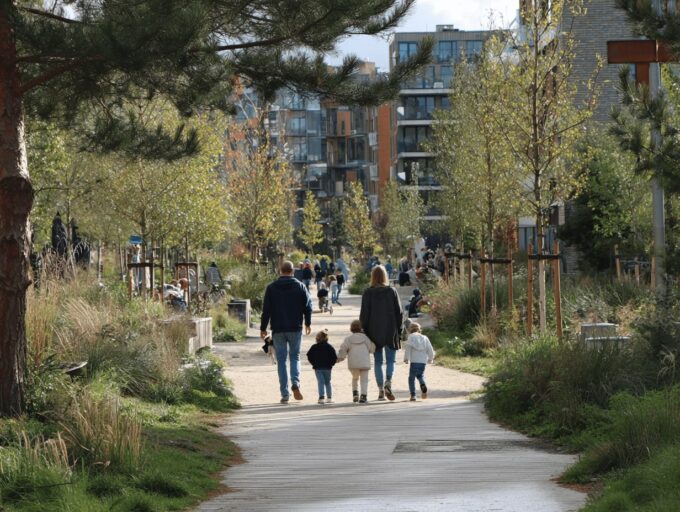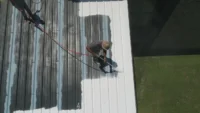- Home
- Articles
- Architectural Portfolio
- Architectral Presentation
- Inspirational Stories
- Architecture News
- Visualization
- BIM Industry
- Facade Design
- Parametric Design
- Career
- Landscape Architecture
- Construction
- Artificial Intelligence
- Sketching
- Design Softwares
- Diagrams
- Writing
- Architectural Tips
- Sustainability
- Courses
- Concept
- Technology
- History & Heritage
- Future of Architecture
- Guides & How-To
- Projects
- Interior Design
- Competitions
- Jobs
- Store
- ToolsNew
- More
- Home
- Articles
- Architectural Portfolio
- Architectral Presentation
- Inspirational Stories
- Architecture News
- Visualization
- BIM Industry
- Facade Design
- Parametric Design
- Career
- Landscape Architecture
- Construction
- Artificial Intelligence
- Sketching
- Design Softwares
- Diagrams
- Writing
- Architectural Tips
- Sustainability
- Courses
- Concept
- Technology
- History & Heritage
- Future of Architecture
- Guides & How-To
- Projects
- Interior Design
- Competitions
- Jobs
- Store
- ToolsNew
- More
When Roof Repair Isn’t Enough: Why You Need a Full Replacement

It can be easy to overlook the condition of your roof until a major problem arises. Homeowners often debate between simple repairs and a full roof replacement, especially when weathered shingles and leaks are known. While it may seem more economical to patch up a roof, there are instances when repairs simply won’t cut it. Understanding when a full roof replacement is necessary can save you from more significant issues and expenses.
Table of Contents
ToggleSigns of Serious Damage
A few missing shingles or a small leak might seem trivial to the untrained eye, yet these problems can signal deeper issues. When your roof starts showing signs of sagging or buckling, it indicates structural problems that repairs cannot effectively address. Such damage usually means the roof deck is compromised, increasing the risk of further issues, especially during harsh weather conditions.
Furthermore, widespread damages, like extensive granule loss and cracked tiles, reduce effectiveness. These situations often hint that the roof is nearing the end of its lifespan. In these cases, simply replacing a few shingles isn’t a realistic solution; a comprehensive evaluation by local roofers might suggest that a full replacement scenario is more prudent to ensure enduring safety and integrity. Professional roofers bring expertise and familiarity with local building codes and weather conditions, ensuring the job is done correctly.
The Age of Your Roof
Age is crucial in determining whether your roof requires repair or replacement. Most roofing materials come with a limited lifespan, ranging from 15 to 30 years for asphalt shingles and even longer for metal roofing. If your roof is approaching or has exceeded its expected lifespan, it becomes increasingly risky to rely on repairs as a long-term solution.

Moreover, an aging roof is more likely to suffer from wear and tear, leading to leaks and other issues. At this stage, repairs become merely temporary fixes rather than permanent solutions. Investing in a new roof is often less costly in the long run than pouring money into endless repairs on an old, failing roof.
Energy Efficiency Concerns
Outdated roofing systems can significantly impact your home’s energy efficiency, leading to higher utility bills. Poor insulation and ventilation from an aging or damaged roof mean that heat escapes during the winter and enters during the summer. Thus, your heating and cooling systems work harder than needed to maintain comfortable temperatures.
If your roof shows signs of significant wear, consider a full replacement. A new roof will provide better insulation, and modern materials are also designed to reflect heat effectively, drastically reducing energy costs. The initial investment can translate into savings over time, positively affecting your finances and environmental footprint.
Long-term Value of a New Roof
While the initial cost of a full roof replacement can seem daunting, considering the long-term value is essential. A newly replaced roof enhances your property’s aesthetic appeal and marketability. Signs of roof issues often deter potential buyers; thus, having a new roof can increase the overall value of your home.
Moreover, new roofing technology has made significant advancements in durability and design. Modern materials align with energy-efficiency goals and are built to withstand extreme weather, reducing the need for frequent repairs or replacements. Investing wisely in a new roof secures a long lifespan and savings.
Cost Considerations
The financial aspect of roofing often weighs heavily on the minds of homeowners. While it might seem prudent to patch problems as they arise, think about the cumulative costs of repetitive repairs compared to a one-time investment in a new roof. Factor in potential expenses from damage caused by neglecting to replace your roof, and the numbers may point towards a complete replacement as the more fiscally responsible decision.

Consider financing options offered by many local contractors. This can ease the financial burden, allowing you to pay for the roof replacement over time instead of facing all costs upfront. Ultimately, examining immediate costs and potential long-term savings will clarify the necessary decision regarding your roof.
Weather Patterns and Their Impact
Your property’s geographic location significantly influences roofing requirements. Areas prone to severe weather, heavy rainfall, or hot climates demand roofs that can withstand those conditions. If your roof consistently suffers from damage due to local weather events, simply repairing and patching up may not suffice.
Investing in a roof built for your environment can improve your home’s longevity and safety. Modern materials come with features tailored to specific environmental concerns. Therefore, opting for a full roof replacement grants you peace of mind, knowing it’s designed to handle local weather patterns.
Financially, emotionally, and structurally, opting for a full roof replacement can yield long-lasting benefits. As you assess the condition and age of your roof, consider the potential savings a new installation can provide. Ensuring your home remains safe and efficient requires thoughtful decision-making regarding roofing needs.
illustrarch is your daily dose of architecture. Leading community designed for all lovers of illustration and #drawing.
Submit your architectural projects
Follow these steps for submission your project. Submission FormLatest Posts
From Planning to Completion: Steps for a Successful Roof Project
Undertaking a roofing project can be a daunting experience. Whether you are...
Detailed Process of Roofing Installation for Multifamily Properties
Roofing installation for multifamily properties is a significant investment that requires careful...
Advantages of Choosing a Metal Roof for Your Home
When it comes to selecting a roofing material for your home, homeowners...
How to Identify When It’s Time to Replace Your Roof?
Your roof protects everything beneath it, yet most homeowners don’t think about...












Leave a comment